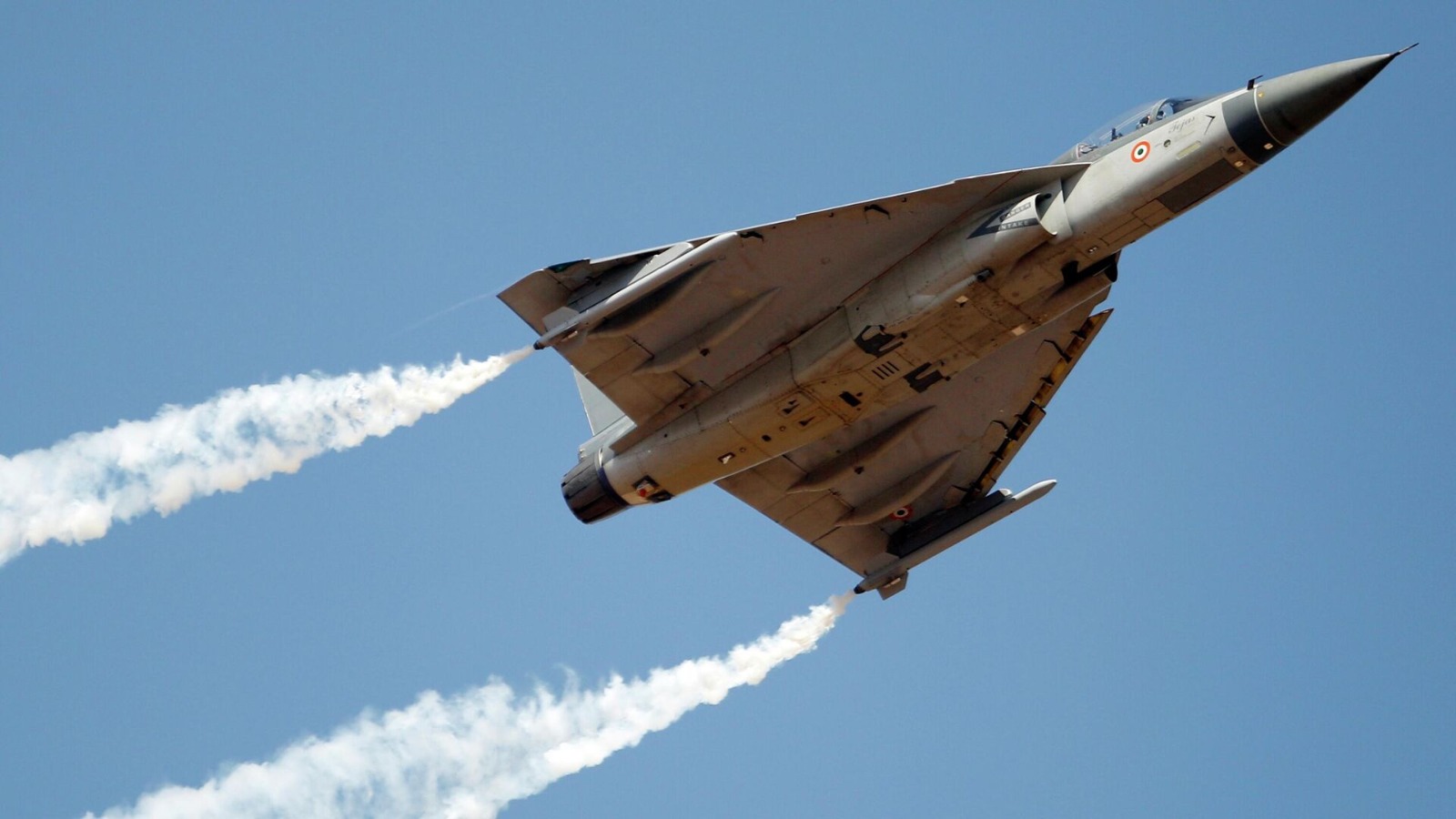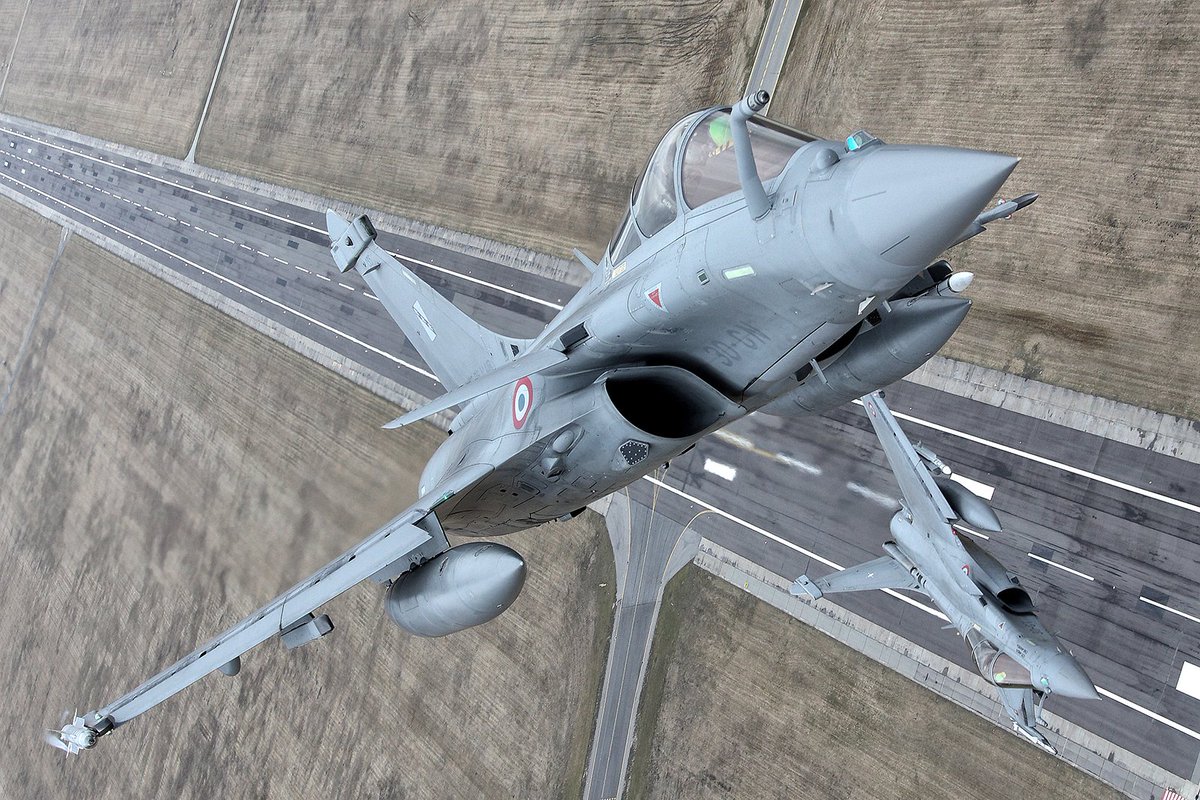The hoopla surrounding bilateral ties between India and the US has ended in naught. India has levied penalties on American aero-engine maker GE Aerospace for failing to deliver engines to power the Indigenous fighter aircraft Light Combat Aircraft Mk1A. This has not only delayed the Indian Air Force’s (IAF) modernization plan but also raised a question about the reliability of the US as a defense supplier.
India has yet to opt for an American fighter jet, a reluctance rooted in generations of distrust. The latest setback can also spell turbulence for the American bid to supply the IAF with 114 Medium-Role Fighter Aircraft (MRFA).
Lockheed Martin is offering the F-21, an upgraded version of the F-16, and Boeing has offered the F/A-18 Block III Super Hornet and F-15 EX. The other contenders are the French Rafale and Swedish JAS-39 Gripen.
In its previous incarnation as a Medium Multi Role Combat Aircraft (MMRCA) deal to supply the IAF with 126 fighter jets, India opted for the French Rafale. Over the years, the IAF’s fleet has inducted American helicopters and transport aircraft, but the force has yet to induct an American fighter jet—a major offensive platform.
Since independence, New Delhi has leaned heavily towards Moscow, while Washington has armed Islamabad to the teeth. As recently as 2019, the US-supplied F-16s in the Pakistan Air Force (PAF) were deployed against India, a fact that the IAF veterans repeatedly pointed out.
This is one reason the IAF experts indicate that the F-21, a fighter jet pegged as developed and designed specifically for India, is unlikely to make the final cut despite great capabilities.
The F-21 is not just a redesignated F-16; it also packs more punch than the F-16 Block-70 combat jets. In fact, it has been touted as just one step behind the 5th-generation stealth fighter F-22 Raptor.
In August 2021, Hindustan Aeronautics Limited (HAL) signed a $716 million deal with GE for 99 F404 aircraft engines and support services for the LCA-Mk-1A.
In 2023, during Prime Minister Narendra Modi’s visit to Washington, the two countries inked a contract to manufacture 98 kilo-newton thrust GE-414 engines that will power the LCA MK II.
The deal for the GE aero-engines was seen as heralding a new era in the partnership between the two countries. However, it has been two years, and not a single engine has been delivered yet, pushing the deadline to deliver the first LCA MK1A indefinitely.

The HAL is yet to receive a single F-404 engine from General Electric. Because of this, the deadline to deliver the first LCA MK1A, planned for February 2024, has been pushed back. It looks highly unlikely that the IAF will receive the aircraft even in November.
The HAL has come up with an alternate plan to install used engines on the initial batch of jets as an interim measure.
Prime Minister Narendra Modi and Defence Minister Rajnath Singh flagged the engine delivery delay during their recent visits to the US. GE has promised to start delivering the engines by March/April 2025.
Underwater Fighters! BIG European Firms Battle For ‘Big Ticket’ Indian Navy’s AIP-Submarine Contract
India has levied penalties according to the contract clauses. Penalties have been laid several times according to the delay in each delivery schedule.
The delay is not likely to be a US pressure tactic; rather, it is the result of the financial woes that the South Korean firm that GE partnered with is facing. But the fact remains that there seems to be an insurmountable schism between the two countries.
‘Tsar Bomba’: When Russia Shocked The U.S. By Testing World’s Most Powerful Thermonuclear Bomb
Government Supports 114 MRFA For IAF
The IAF is down to its 1965 fighter jet squadron strength. It is left with only 31 fighter jet squadrons, as against the required 42. The government has expressed agreement with the IAF’s requirement for 114 MRFA (multi-role fighter aircraft). However, it is still deciding whether to go for a government-to-government contract or complete a long-drawn tendering process.
The government has become cautious after the purchase of 36 Rafales directly from France became a political hot potato.
The IAF conducted strenuous trials of most of the fighter jets participating in MRFA during the MMRCA deal, and Rafale emerged as the winner. However, the government just doesn’t want to go with Rafale and is keen on fifth-gen fighters or something very close to it. Also, Dassault’s order books are full of global orders for Rafale, and there will be a considerable time gap before the company is able to deliver to the IAF.

The IAF needs these fighter jets “as of yesterday.”
India & US: A Chequered History
As India went against China for the first time in 1962, it approached the US for fighter jets. New Delhi got transporters and radars but no fighter jets. India suffered an ignominious defeat.
Washington supplied Islamabad with 12 supersonic fighter jets. Paired with Pakistan’s F-86 Sabres, they gave the PAF a technological edge over the IAF in the 1965 war.
After the 1962 debacle, the IAF opted to buy the MiG-21 supersonic fighter jets from the USSR, which started India’s dependence on Russia for fighter jets.
In 1998, following India’s nuclear test, the US-led economic sanctions tried to cripple India, a fact that France reminds New Delhi on every occasion.
“We have stood by your side through thick and thin,” Safran’s chair, Ross McInnes, assured an audience at India’s Defence Conclave at the beginning of October. “The same cannot be said of your other Western partners,” he added, noting that France was the only Western country that stood with India after the US-led sanctions in the aftermath of 1998 nuclear tests sought to cripple its economy.
It’s no surprise that French aero engine maker Safran has offered India ownership of the engine technology that will be developed under collaboration. This step is aimed at giving India “strategic independence” to design, develop, and produce military jet engines for domestic use and export. GE, on the other hand, is reported to withhold certain critical technologies.
The US backstabbing continued during the Kargil Conflict in 1999. The Indian soldiers were left high and dry while trying to push the Pakistani insurgents from their entrenched positions in the heights of the Himalayas.
India asked the US for help with its satellite-based navigation system to locate the insurgents, a request that Washington denied. India is now ditching this US-owned satellite-based navigation system in favor of its own NavIC (meaning ‘sailor’ in Hindi) navigation system.
Meanwhile, Donald Trump, who is a hot contender to become the next American president, appears to be wooing India and the Hindu community in the US.
He tweeted: I strongly condemn the barbaric violence against Hindus, Christians, and other minorities who are getting attacked and looted by mobs in Bangladesh, which remains in a total state of chaos. It would have never happened on my watch. Kamala and Joe have ignored Hindus across the world and in America. They have been a disaster from Israel to Ukraine to our own Southern Border, but we will Make America Strong Again and bring back Peace through Strength! We will also protect Hindu Americans against the anti-religion agenda of the radical left. We will fight for your freedom. Under my administration, we will also strengthen our great partnership with India and my good friend, Prime Minister Modi. Kamala Harris will destroy your small businesses with more regulations and higher taxes. By contrast, I cut taxes, cut regulations, unleashed American energy, and built the greatest economy in history. We will do it again, bigger and better than ever before—and we will Make America Great Again. Also, Happy Diwali to All. I hope the Festival of Lights leads to the Victory of Good over Evil!




